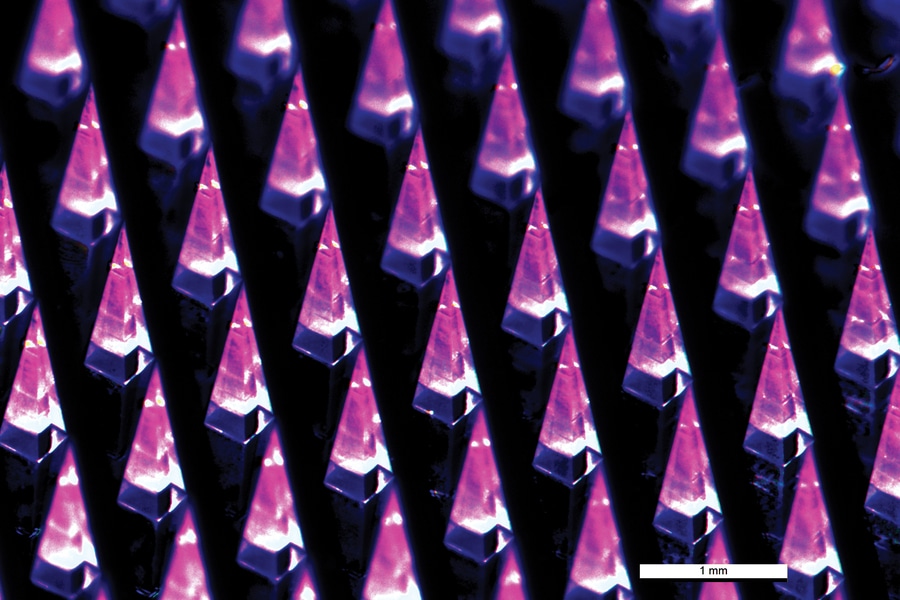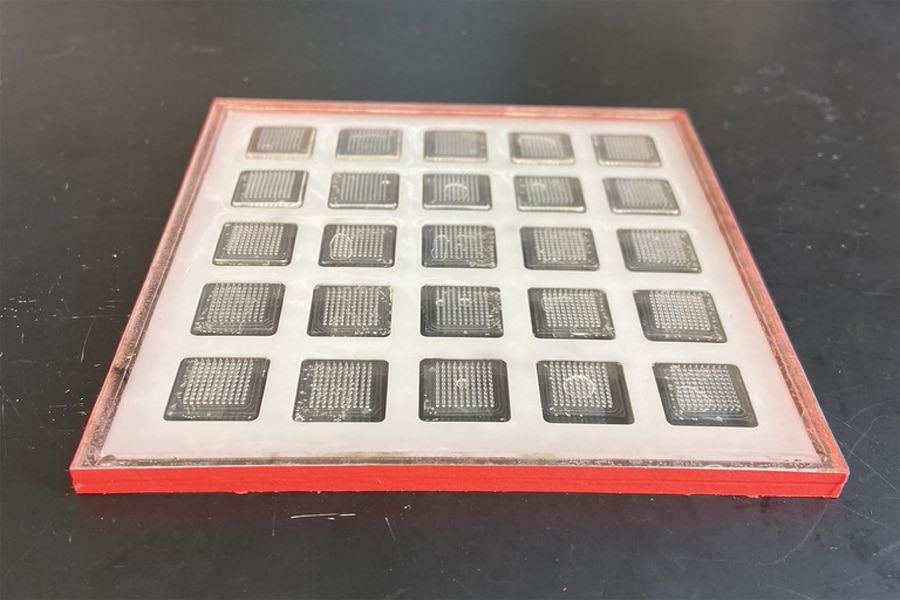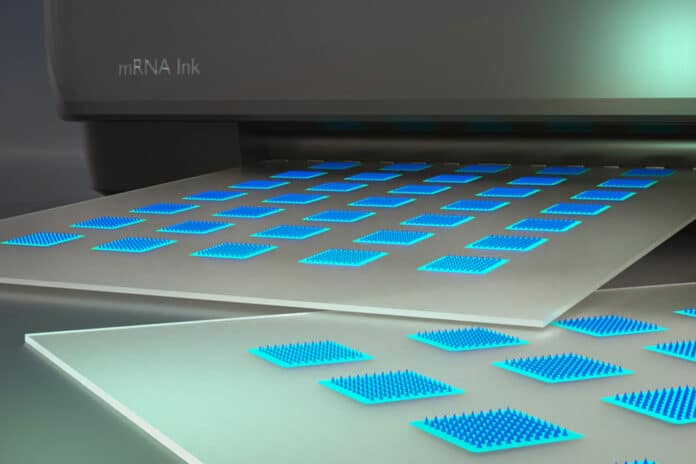Unvaccinated communities in low- and middle-income countries are at high risk for repeated outbreaks of infectious diseases. Mass vaccination in these communities has been hampered by issues such as inadequate cold-chain-compatible storage and transport infrastructure and an insufficient number of healthcare personnel.
Distributed, local systems for manufacturing suitable vaccines offer a potential solution. A mobile vaccine printer that could be scaled up to create hundreds of doses of the vaccine every day has been proposed by MIT researchers as a potential remedy for this issue. Anywhere vaccines are required, this type of tabletop printer might be used.
The printer creates patches that include thousands of tiny needles embedded with vaccination. Without the requirement for a conventional injection, the vaccine can disintegrate when the patch is fastened to the skin. The printed vaccine patches can be kept at room temperature for months after printing.

The researchers chose to work with a novel method of vaccine delivery based on patches approximately the size of a thumbnail, which contain hundreds of microneedles, rather than creating conventional injectable vaccinations. For several diseases, including polio, measles, and rubella, such vaccinations are now being developed. The needle tips in the patch disintegrate beneath the skin when it is placed, dispensing the vaccination.
The “ink” that the researchers use to print the vaccine-containing microneedles includes RNA vaccine molecules encapsulated in lipid nanoparticles, which help them to remain stable for long periods.
Additionally, the ink contains polymers that, even when stored at ambient temperature or higher, may be easily molded into the desired shape and then remain stable for weeks or months. The best combination of stiffness and stability, according to the researchers, was achieved by mixing polyvinylpyrrolidone and polyvinyl alcohol 50/50, two materials frequently used to create microneedles.
A vacuum chamber beneath the mold pulls the ink down to the bottom, ensuring that the ink reaches the tips of the needles. A robotic arm within the printer injects ink into microneedle molds. The molds need a day or two to dry after being filled. The researchers predict that future versions may be built to have a larger capacity. The current prototype can create 100 patches in 48 hours.

To test the long-term stability of the vaccines, the researchers first created an ink containing RNA that encodes luciferase, a luminescent protein. They applied the resulting microneedle patches to mice after being stored at either 4 degrees Celsius or 25 degrees Celsius (room temperature) for up to six months. They also stored one batch of the particles at 37 degrees Celsius for one month.
When applied to mice, the patches produced a potent luminous response in these storage situations—in contrast, longer storage times at ambient temperature led to a decrease in the luminous response brought on by a conventional intramuscular injection of the RNA encoding for the luminescent protein.
The scientists next put their Covid-19 microneedle vaccine to the test. They gave mice the vaccine twice, four weeks apart, and then monitored the mice’s immune system’s response to the virus. Those that received the microneedle patch vaccination responded similarly to those that received the conventional, intravenous RNA vaccine.
When the scientists inoculated mice with microneedle patches that had been kept at room temperature for up to three months, they also observed the same robust antibody response.
Joseph DeSimone, a professor of translational medicine and chemical engineering at Stanford University, said, “This work is particularly exciting as it realizes the ability to produce vaccines on demand. With the possibility of scaling up vaccine manufacturing and improved stability at higher temperatures, mobile vaccine printers can facilitate widespread access to RNA vaccines.”
While this study focused on Covid-19 RNA vaccines, the researchers plan to adapt the process to produce other types of vaccines, including vaccines made from proteins or inactivated viruses.
Journal Reference:
- Vander Straeten, A., Sarmadi, M., Daristotle, J.L. et al. A microneedle vaccine printer for thermostable COVID-19 mRNA vaccines. Nat Biotechnol (2023). DOI: 10.1038/s41587-023-01774-z
